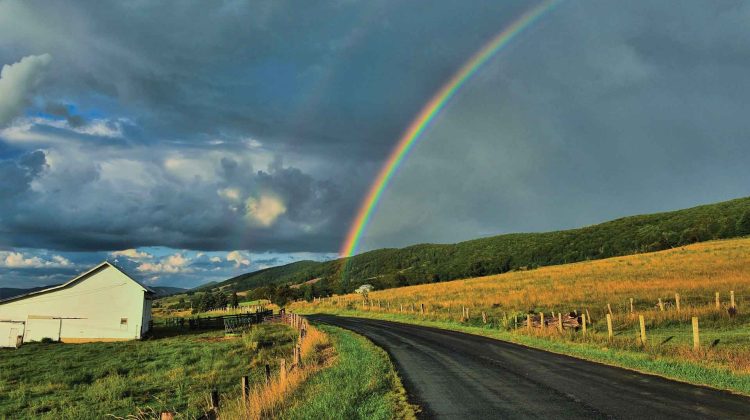
Traffic. If there’s an Alleghany Highlands dictionary, the word “traffic” isn’t in it. Y’see, there just ain’t any.
How many times have you been on a beautiful mid-Appalachian backroad in the Carolinas, Tennessee, Georgia, or elsewhere, staring down the tailpipe of a car or truck in front of you, going 30% slower than you want to go, looking for a safe place to pass? Apart from the Interstate 64 and U.S. 60 corridor through Clifton Forge and Covington, you can forget that when you come to the Alleghany Highlands.
You’ll come to an intersection of country roads out there in the boondocks of Bath, Highland, or even most of Alleghany County. You’ll dutifully stop and look both ways as you should and as your muscle memory dictates. But you needn’t bother; trust me, nobody will be coming.
On most of these three-digit 600 roads — the 687s, the 678s, the 624s and so on — you can literally stop your bike in the middle of the road, take off your helmet, snap some photos, eat a banana, and scratch yourself before having to move out of the way for another vehicle. Your hazards are deer and kamikaze squirrels.
Welcome to the center of Virginia’s hinterlands, where bears surely outnumber people. The Allegheny Highlands region’s four counties — Bath, Highland, Alleghany and Craig — and the city of Covington, are the state’s least populated places. Highland has a paltry 2,200 or so souls. Bath is a distant second with a whopping 4,100. Craig is third with 4,800. And between the last two censuses, all three had fewer than the one before.
While you and your neighbors are complaining about how fast your city is growing, it ain’t the same here. Between them, Bath, Highland, and Craig counties have exactly zero traffic lights. Allegheny County has maybe a dozen, all in either the town of Clifton Forge or Covington.
Their economies, in a nutshell, go something like this:
• Highland is agricultural, with a budding tourism industry.
• Bath, with its dominant employer, the Omni Homestead Resort, has always been a tourist destination.
• Alleghany is more industrial. Covington hosts a large paper mill and Clifton Forge was once a railroad town, both with mining and timbering in the neighboring mountains. They’re now sowing their tourism oats in the arts and recreation as well.
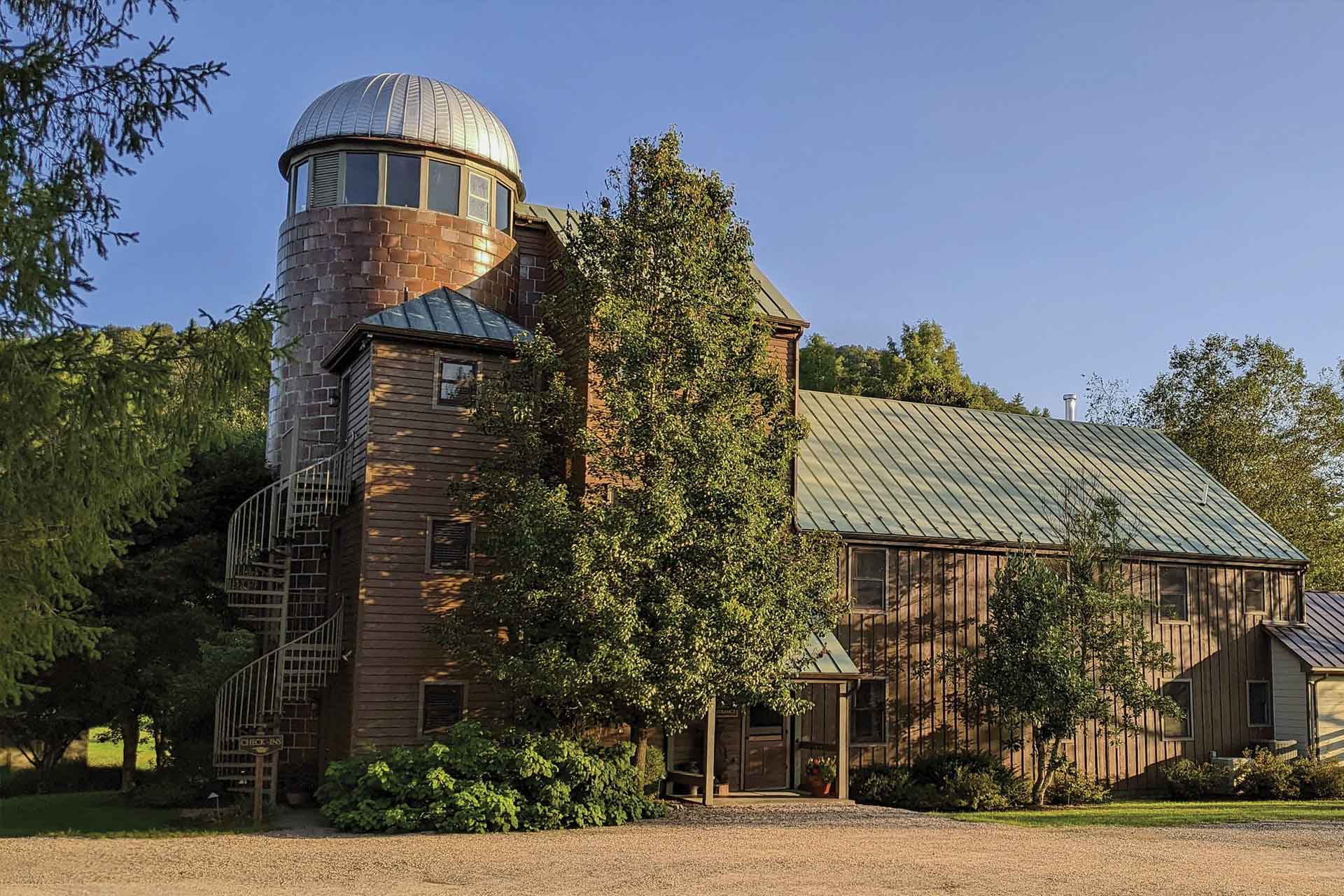
It’s said you can’t eat the scenery, but you can surely enjoy it. You can spend days on the region’s backroads, and then if you like getting dirty, spend more days on the forest service roads. It’s motorcycling nirvana.
I started my exploration visiting the new, modern Alleghany Highlands Chamber of Commerce and Tourism office by talking with Executive Director Teresa Hammond. The building is in a strip-mall just off I-64 in Covington.
“We have great scenic drives, but are known for our outdoor recreation,” she said. “We have Lake Moomaw, Douthat State Park, Humpback Bridge, Jackson River, Falling Spring Falls, and beautiful drives all around.”
She said Covington has always been an industrial town, centered along the Jackson River. There were tanneries and paper making. The Chesapeake and Ohio Railroad, now part of CSX, has always played a major role in the corridor, crossing the Allegheny Mountains into West Virginia in 1873, also playing a role in the New River Gorge, now a new national park. A massive papermaking plant — WestRock (from a merger of MeadWestvaco and RockTenn) — dominates Covington’s economy and produces its famed malodor.
“The paper mill doesn’t smell as bad as when I was growing up,” she protested. “Unless you’re close to the mill, you can’t smell it anymore. They employ about 1,200 people. Covington has a big service sector being the county seat, hosting lots of lawyers, bankers, insurance agencies and realtors.
“Clifton Forge was once a railroad town but has repurposed itself as an arts-centric downtown. The centerpiece of that is the Historic Masonic Theatre right in downtown. It’s majestic. It has 500 seats and is a step back in time.
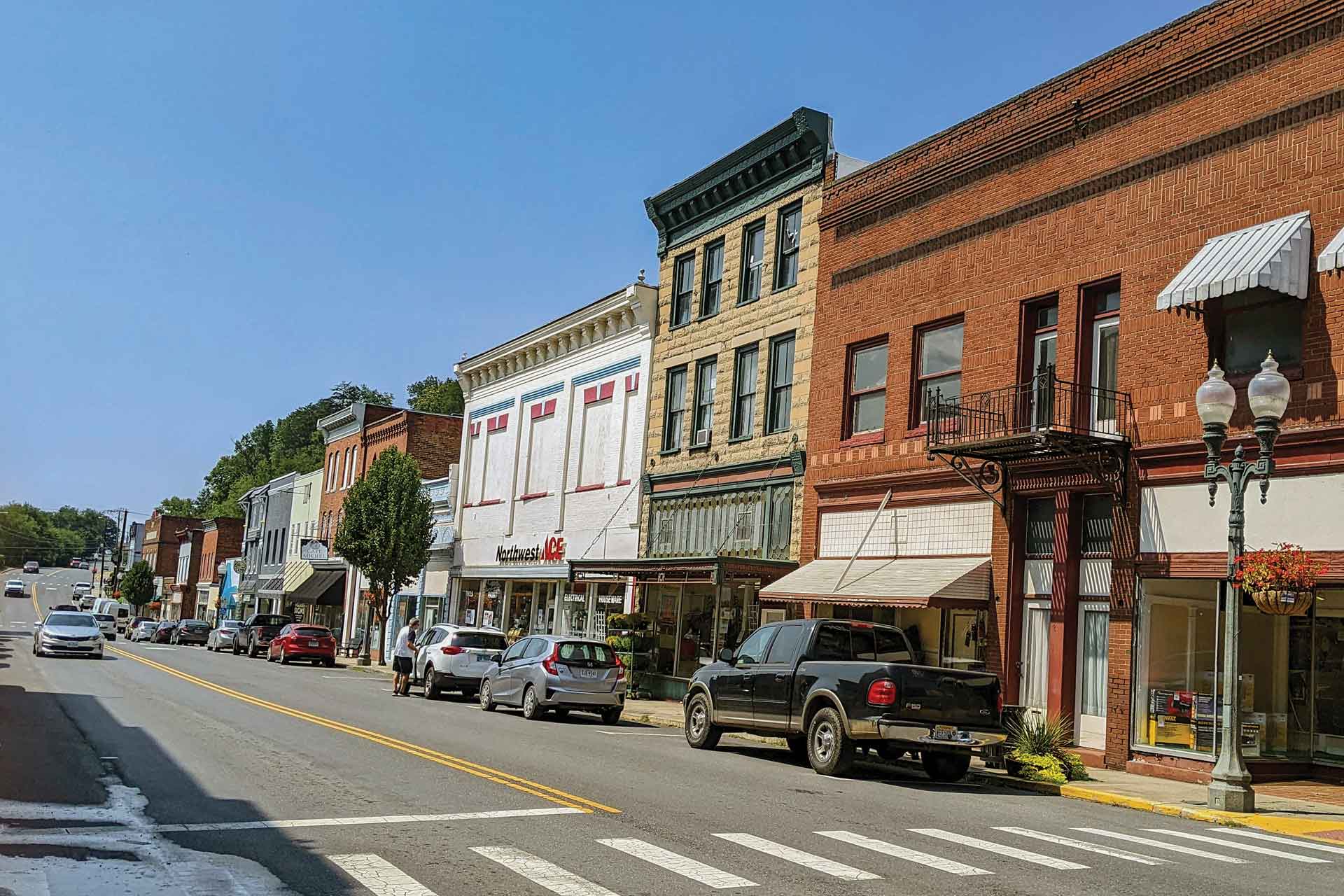
“We’re also on the Mid-Atlantic Backcountry Discovery Route, so we see lots of off-road motorcycling,” she said.
The MABDR stretches 1,052 miles from Damascus, Virginia, to Lawrenceville, Pennsylvania, designed as a scenic route for dual-sport and adventure motorcycles, using dirt, gravel and paved roads.
“Our visitors primarily come from the (Washington) D.C. area, Richmond, and Pennsylvania and Ohio. We see people from Florida and New York. We are central to the entire mid-Atlantic,” Hammond said.
B&Bs have grown in popularity. The people are welcoming and friendly and the rural area has good internet service throughout the county.
“This area is diminishing in population. We have an aging demographic. We lost sight of what we have to offer to visitors,” she said. “We have significant tourism assets that we weren’t capitalizing on. Great fishing. Canoeing and kayaking. Great bicycling. Great hiking. And great motorcycling. Our county is more than 50% national forest. It’s beautiful here. Now we are marketing these assets.”
She left me with much from which to choose, but I set my sights westward for a few miles and found the Humpback Bridge. The bridge is one of the few remaining covered bridges built higher in the middle than at the ends. Built in 1857 and used until 1929 until replaced by a more modern bridge, it is the oldest remaining covered bridge in Virginia and is 109 feet across.
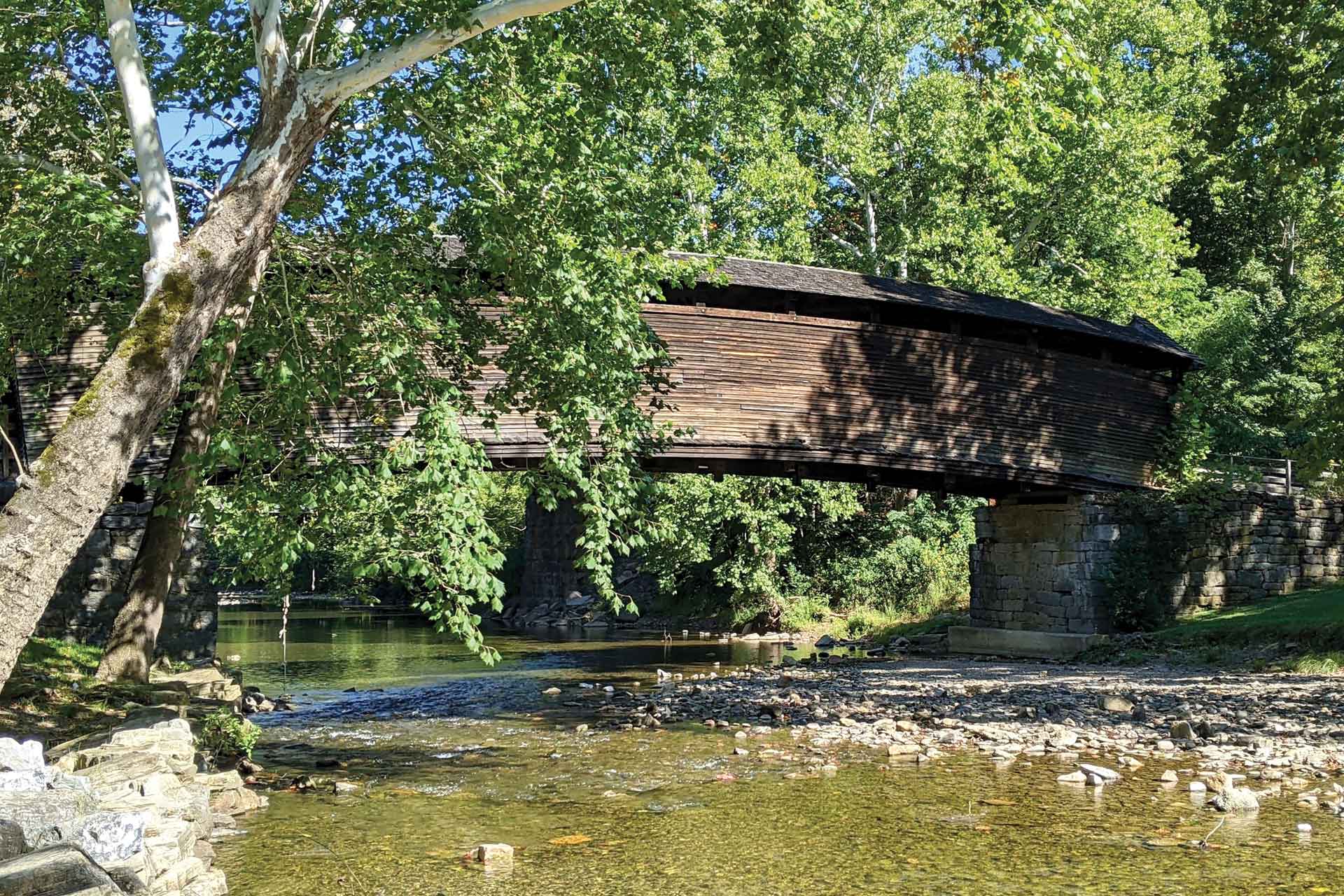
There’s a small parking area and wayside, making it a great picnic destination. As part of Virginia’s LOVEworks project which, originating from its iconic Virginia is for Lovers slogan, localities place LOVE sculptures across the state in a branding initiative to promote travel. Humpback Bridge’s LOVE sculpture uses historic bricks for the “L,” a huge gear from an old paper machine for the “O,” a naturally V-shaped tree for the “V” and railroad ties making the “E.” Just charming.
A word about “Allegheny” and its spelling. Technically, the Allegheny Mountains are the portion of the vast Appalachian Mountains that lie to the west of the Blue Ridge, from Pennsylvania through West Virginia and Virginia. Maddeningly, the mountains are “Allegheny,” but the county is “Alleghany.” More maddeningly, one reference I found said the word “Allegheny” was an Algonquin word for “endless” and another said it is from the Delaware Indians meaning “fine river.”
Back into Covington, I took U.S. 220 North on a wonderfully curvy road to the pull-out for Falling Spring Falls, a stunning 80-foot waterfall just off the side of and easily visible from the road. Cascading from an overhanging ledge, it is one of the most scenic and photographed spots in the county. I gobbled down my picnic lunch before wandering over to the falls overlook.
Thomas Jefferson described it as a “remarkable cascade… falling over a rock 200 feet to the valley below.” Apparently for all his intellectual assets, our third president was not skilled at judging heights.
I rode northward to see Lake Moomaw, considered by many to be Virginia’s most beautiful lake. Surrounded by forested mountains, it was created in 1979 by the construction of the Gathright Dam to provide flood control on the Jackson River for the city and industries downstream in Covington. The lake, encompassing 3.9 square miles, was named for businessman Benjamin Cline Moomaw Jr., and the dam was named for Thomas Gathright, who owned the land now beneath the lake. I lucked into a beautiful late summer day with sunshine reflecting on the crystalline water.
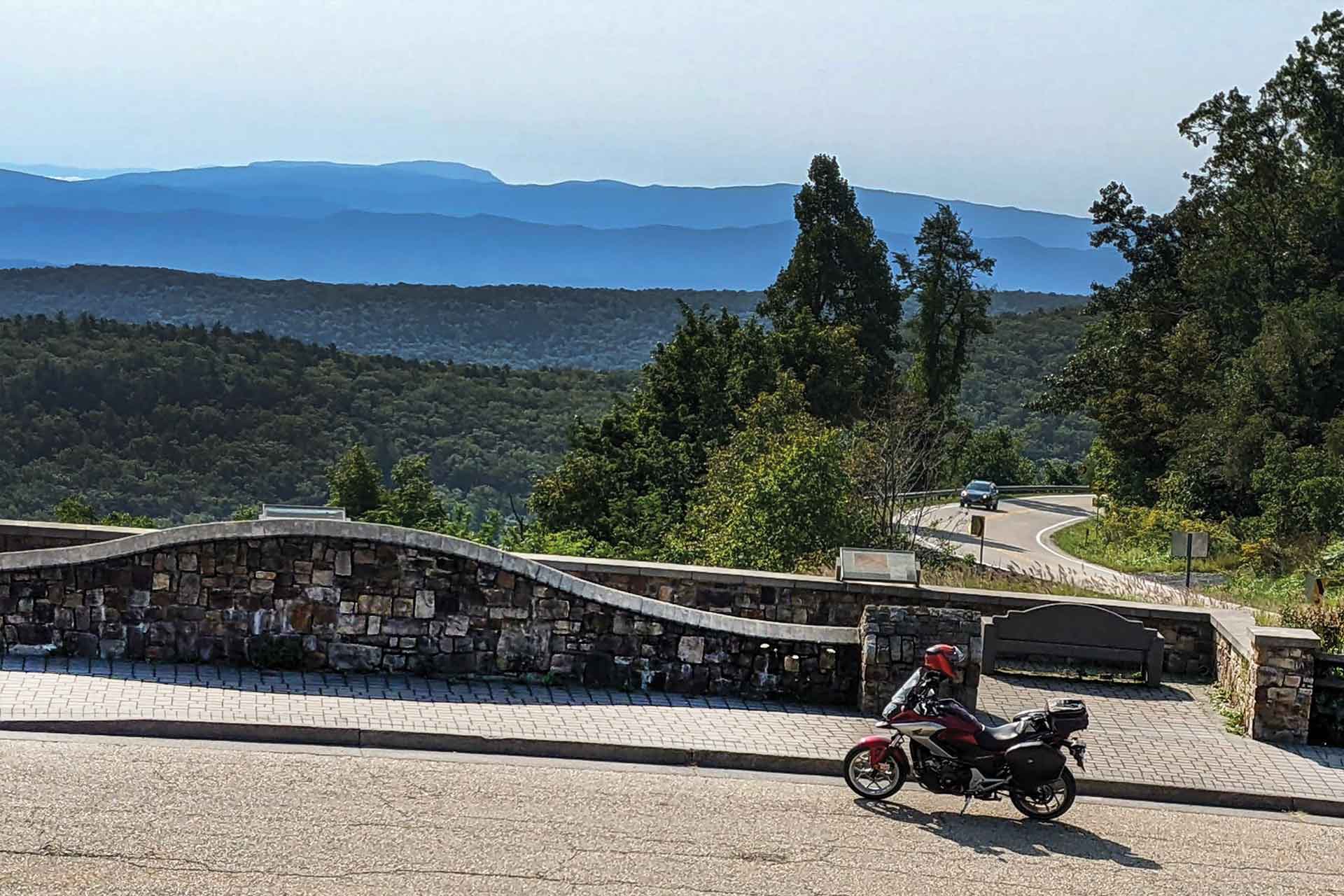
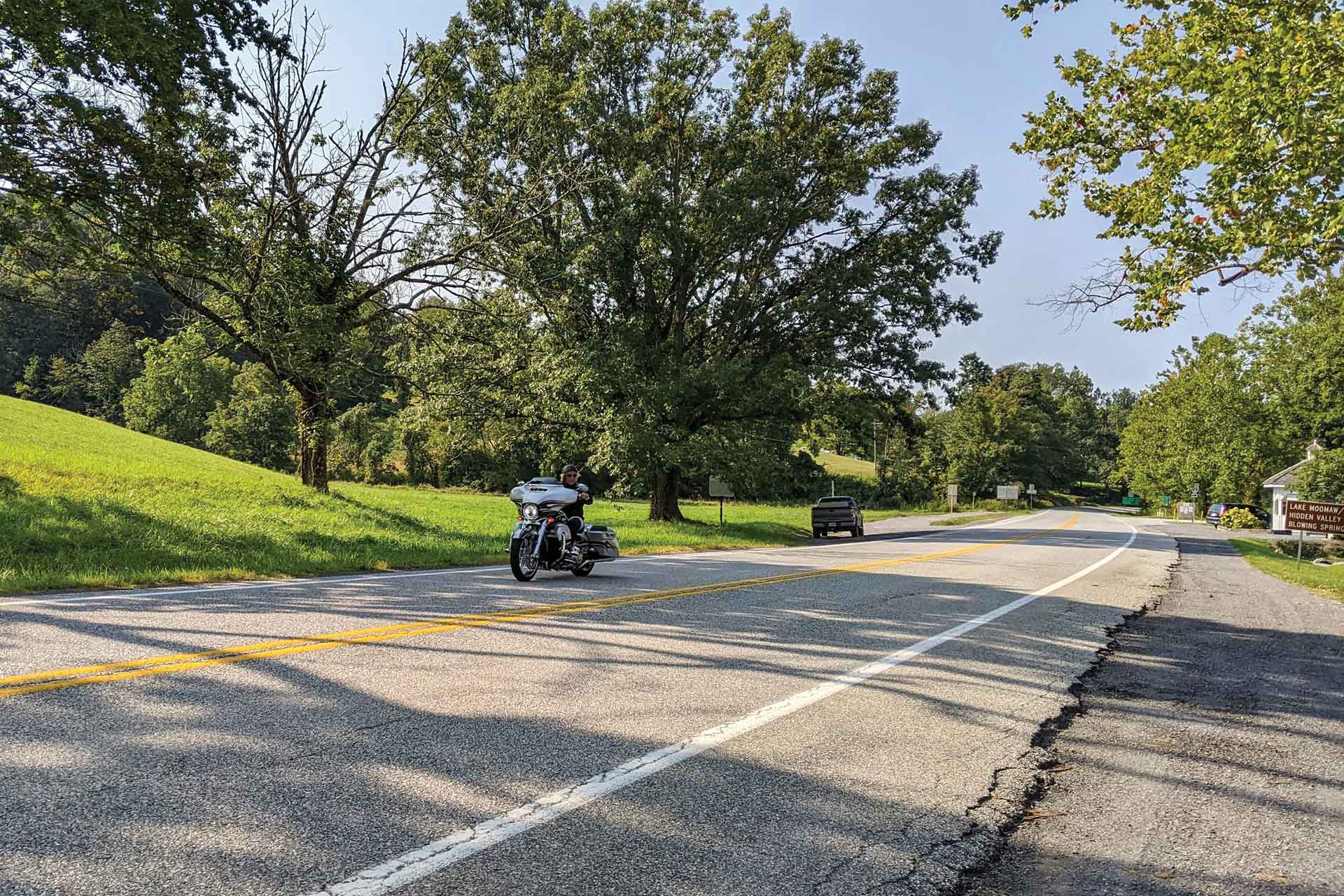
A country lane took me northward into Bath County through the village of Bacova (a portmanteau of Bath County, Virginia) where years ago there was a factory that produced hand-painted mailboxes, which still adorn driveways throughout the county.
I found myself riding a narrow Route 600 that got smaller and smaller, going from two lanes to one and then finally after crossing into Highland County going dirt. Now mind you, I don’t mind a bit of gravel road riding, but a warning sign would have been nice. Instead, the macadam just vanished under my Michelins.
The Blue Grass Valley is one of Virginia’s loveliest places. The valley is bordered by mountains that are forested in magnificent hardwood trees from the top half-way down to where pasture takes over. Multi-generational sugar orchards owned by the Rexrode and Puffenbarger families bring thousands of tourists to the area each spring when the sap is running, piped into tiny factories where the water is boiled off to make syrup. A half-dozen syrup camps dot Highland County, the farthest south location of commercial production.
It was late afternoon, rush hour everywhere else, when I set sights on the Fort Lewis Lodge back in Bath County, my destination for the evening. I took U.S. 250 over the mountain to McDowell and then Route 678 down through Williamsville to Fort Lewis. Rush hour in Highland County looks something like this:
On U.S. 250 east — which stretches 514 miles from Lake Erie to Richmond, Virginia — I doubt there was another vehicle within a mile in front or behind me. It’s well paved, sinuous as a snake, and wonderfully scenic. A roadside marker commemorates the May 8, 1862, Civil War battle between Thomas J. “Stonewall” Jackson’s Confederates and Robert Schenk’s Federals.
On Route 678, there is nobody else on the road. There is a centerline sometimes, sometimes not. Deer and cows graze in bordering pastures. Squirrels, rabbits, and chipmunks scurry across the road. Vultures kettle overhead. A farm tractor flips cut grass in a field. An American flag flies above a Confederate flag on the same pole.
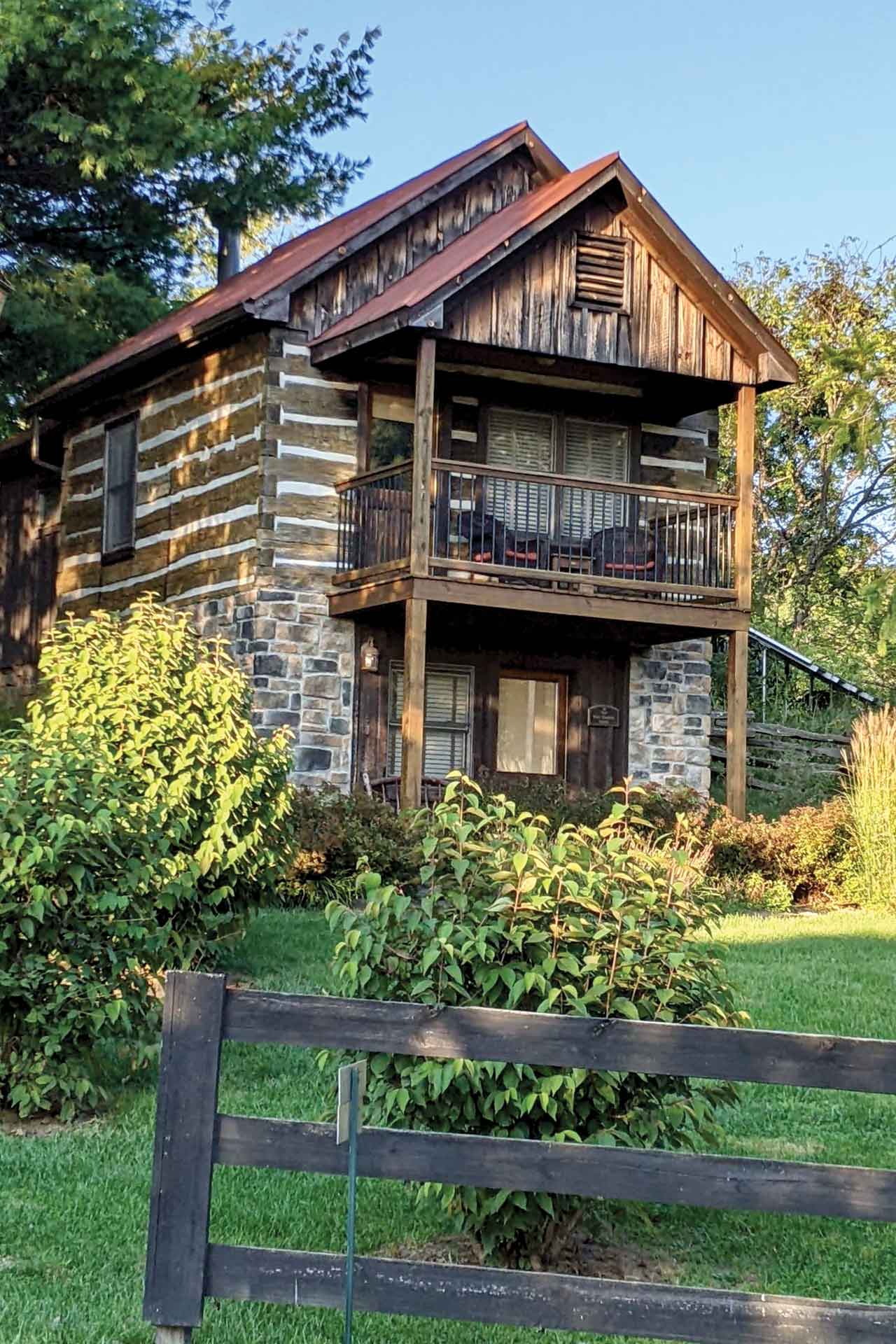
The Fort Lewis Lodge has a mile-long gravel driveway, yielding a collection of rustic structures including the main lodge with its signature four-story silo, a separate dining room and bar formerly the Lewis Mill building, and several cabins, all within a vast 3,300-acre working farm. Owned by the Cowden family since 1989, it fits the niche between the massive Omni Homestead resort over the mountain in Hot Springs and the B&Bs throughout the county.
My room was on the third floor where I tromped up wooden staircases in my heavy riding boots. From my window, I could see the Cowpasture River, widely considered Virginia’s most pristine, across the vast pasture, at the base of a curving cliff.
Caryl Cowden is the primary chef, and dinner included salmon and ham, with fresh vegetables and a salad. Guests were served family style, with kitchen staff filling every plate. It was delectable.
After dinner, I strode up a small knoll in the dark to easy chairs set to scan the evening sky, unlit by any city lights. The Milky Way was clearly visible overhead as were Cygnus, Lyra, and the dippers, big and little.
Next morning before breakfast, I sat with John Cowden in the dining room to chat about the lodge, its history and development.
About the founding of the Lodge, he chuckled, “There is nothing more incentivizing, if that’s a word, than somebody telling you, you can’t do it. We came here in the late 1970s looking to run a farm raising cattle. There wasn’t the income in farming that we anticipated. I went to ag(riculture) school at Ohio State. The property had been in the family. When my dad passed, my mom said somebody needed to do something with it. I twisted Caryl’s arm into coming down. We ran a cattle business for a few years. Caryl’s dad was an accountant and he said, ‘I don’t understand this business. You’ve got to find a way to make a profit.’ I learned in ag school, ‘let the property tell you what it’s best suited for.’ That seemed to be recreation.”
Hiking. Birding. Painting. Bicycling. Rafting. Fishing. Swimming. Hunting. It had raw natural beauty. But there was no place to sleep or eat. They reconstructed an old mill, circa 1850, which became the dining room where we sat. They renovated that and then they built the lodge. Construction stretched over five years.
“Then we faced the marketing challenge,” he said. “It was before the internet.”
The business gradually built up, seeing boosts when articles appeared in various magazines and newspapers.
“Running the business is far more demanding that it might seem. We want to make it look easy. Most people work five days and get two days off each week. We work seven months and then get five months off.
“We have 22 units and can house up to 44 per night. Caryl does a great job with food. We call ourselves a destination country inn. Few people come for only one night.
“We host lots of bicyclists and motorcyclists. The quality of our roads is great. The natural landscape is stunning. I used to ride bicycles often and you could ride down the middle of the road, there’re so few people. This is a great hub for loop (motorcycle) rides in every direction. For motorcyclists, there’s no place better.”
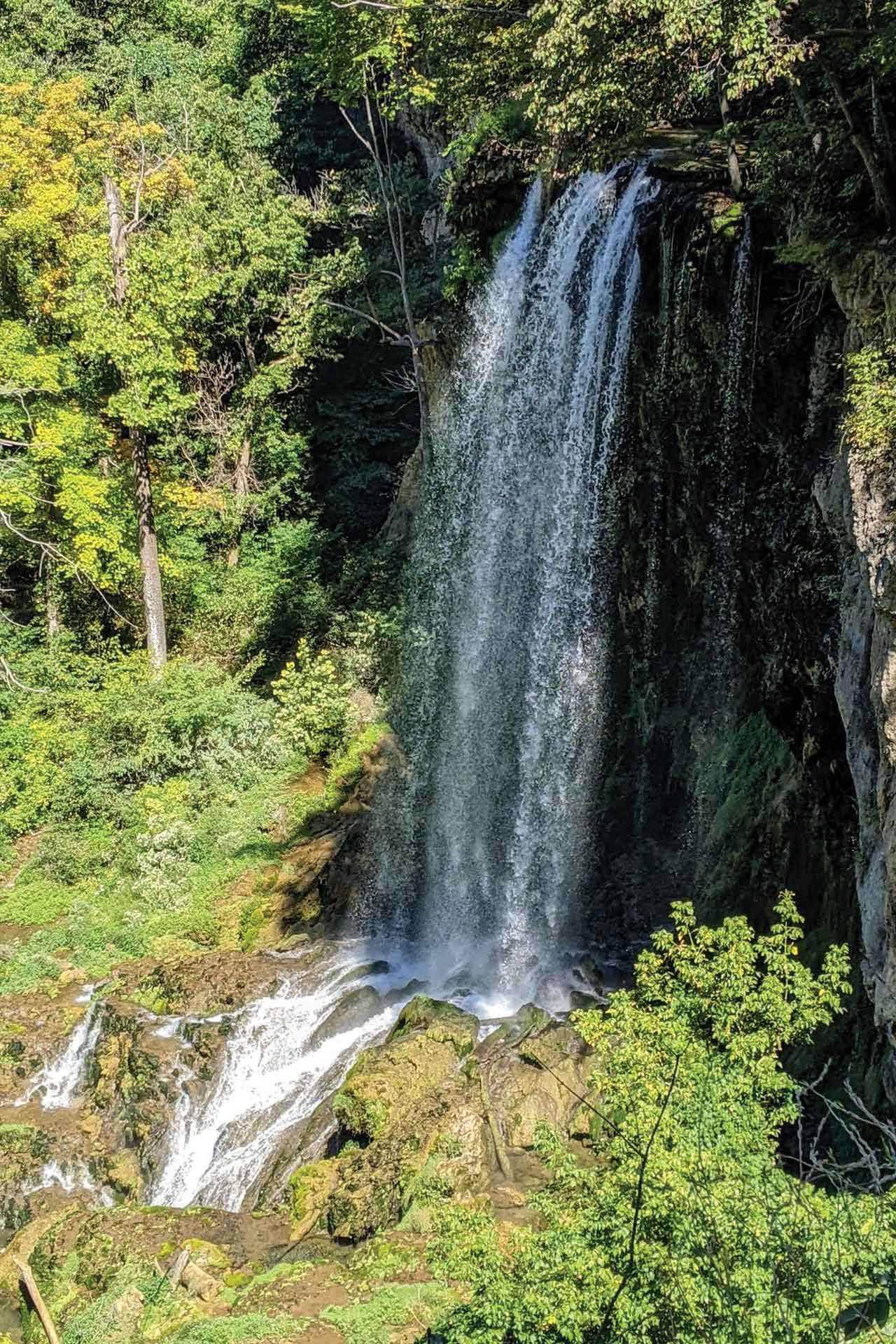
The Mid-Atlantic Backcountry Discovery Route runs nearby. The area is laced with forest service roads.
“We’ve been in the business for 27 years. Industry-wide, the lifespan of this type of business is seven years. It’s important for longevity that you design your business to fit your own personal beliefs, psyche and values and aspirations. We connect with our guests and seek those who share those values. This business is a statement of myself and my family. My kids were raised here and much of my family is here now. There’s practically nothing I miss about city life.”
I packed the 2018 Honda NC750X and departed, driving past whimsical sculptures on the lodge grounds. Reaching the end of the driveway, I dutifully looked both ways. Nobody was coming.
The Honda screamed happy sounds taking me atop Warm Springs Mountain to the Dan Ingalls Overlook, where to the east was a vast vista of endless mountain ridges. Continuing, I plunged into the Warm Springs Valley and the intersection with U.S. 220, then to one of the area’s truly unique locations, the Warm Springs Pools.
The pools are two spa structures, one each for men and women. The men’s pool is the oldest spa structure in the United States, built in 1761 and the ladies’ opened in 1836. Bathers included Thomas Jefferson who spent three weeks there in 1819, bathing three times per day. Because of that, locals often refer to the spas as the “Jefferson Pools.”
My last visit was years ago, and you’ll never find a finer or more memorable experience. You enter the spa, strip naked, and walk stairs into the 98-degree crystal clear, silky mineral water, using a flotation device because the water is too deep to stand. You emerge an hour later, pruned and blissfully relaxed.
Over time, the structures deteriorated to the point where in 2017, the county ordered them shuttered. Acquired by the nearby Omni Homestead Resort, they are currently undergoing a $4 million renovation and aim to reopen by the end of the year.
“As far back as 1838, bathers were complaining about the deterioration and disrepair of the structures,” Homestead’s marketing manager Lynn Swann said. Omni is investing $140 million in the region. “It’s a statement of optimism to make this investment. This place is part of history: American history, Virginia history, and absolutely Bath County history, and Omni respects that. People have been coming here to bathe in these waters for hundreds of years. Renovating and reopening these baths is the right thing to do.”
I took Route 606 over Warm Springs Mountain, the access road to Ingalls Field, the Eastern United States’ highest general aviation airport, and descended into Clifton Forge on a road barely paved, curvy and precipitous, wide enough for only one car, with no guard-rails. I encountered nobody.
I took more scenic backroads through Low Moor, Rich Patch, and New Castle, seat of Craig County, without a single traffic light all the way back to Blacksburg, thinking how lucky I am to live near this amazing area.
Michael Abraham is the author of eight books including “Chasing the Powhatan Arrow,” a travelogue in economic geography available at www.mabrahamauthor.com.


